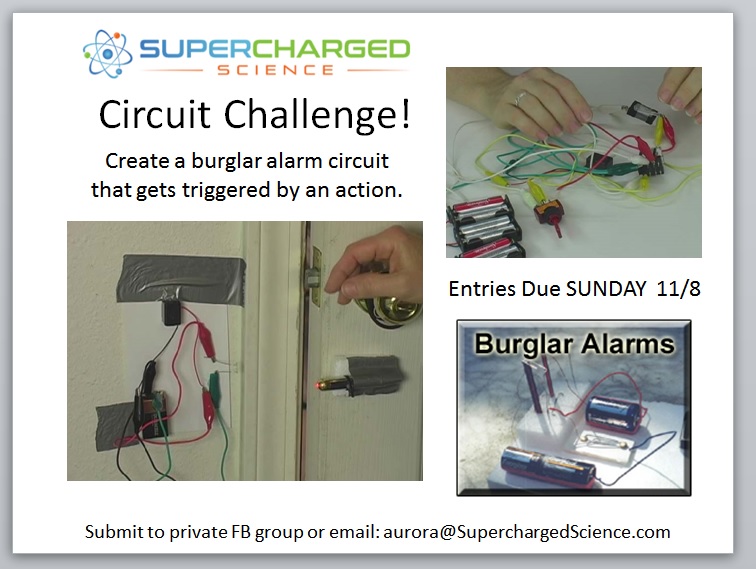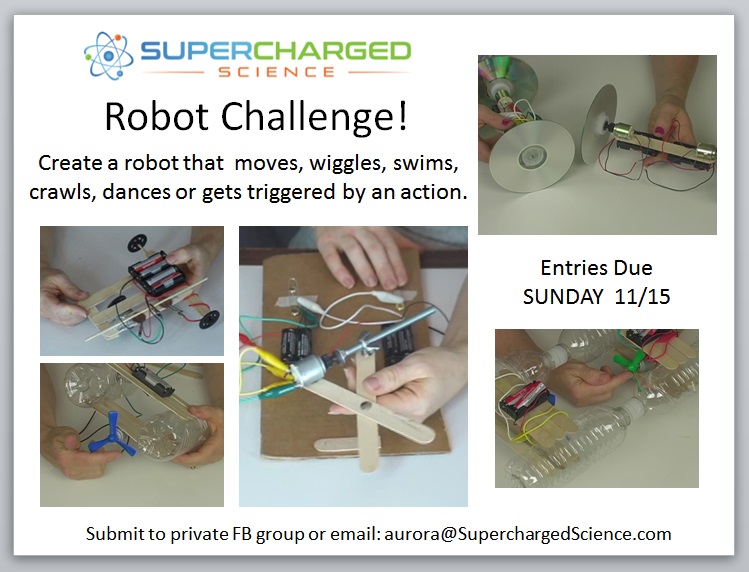[am4show have='p8;p9;p11;p38;p72;p77;p92;' guest_error='Guest error message' user_error='User error message' ]
Week 14: Electricity & Electrical Circuits
You can’t see electricity (usually), but you can certainly detect its effects. Blenders, washing machines, vacuum cleaners, airplanes – all of these use electricity. While you don’t need to understand electricity to turn on a light, you do need to cover the basics in order to make the burglar alarms, latching switches, relays, and more. I’ll show you how to convert your kitchen table into a real Electricity Lab. Be sure to download the experiment list for this month, as there are so many to choose from!
Week 15: Simple Robotics (Electrical Components, Sensors & Robots)
Now it's time to roll those electrical circuits into something that moves, wiggles, dances, crawls, swims, hops, and explores their environment! Let's take your motors, LEDs, switches, buzzers, wires, and more and make them into homemade robots you design yourself!

Week 16: Magnetism & Electromagnetism (Buzzers, Relays & Linear Accelerators)
What IS magnetism, anyway? You can feel how two magnets can push against each other when you bring them close together, but what IS that invisible force, and why is it there? And how come magnets stick to the fridge and not a soda can, even though both are metal? And if you’ve ever slid magnets down a metal ramp, you’ve seen them defy gravity and slow to a stop. And how come the grapes from your lunchbox twist around to align with magnets, even though there’s no iron inside? Does it sound like fun to figure this stuff out? That’s exactly what we’re going to do together this week!Week 17: BONUS VEX IQ Robotics
If you enjoy building robots, and have already created many different things out of LEGOs, this is your next step! VEX IQ is a system that includes elements designed specifically for young students. Students can easily build their first robot using the instructions included in the SuperKit, and then take the next step to build robots that are bigger, stronger, and more functional as they continue to learn. VEX IQ issues new games (challenges) each year, and is played on a 6’ x 8’ rectangular field. Two robots compete in the Teamwork Challenge as an alliance in 60 second long teamwork matches, working collaboratively to score points. Teams also compete in the Robot Skills Challenge where one robot takes the field to score as many points as possible. These matches consist of Driving Skills Matches, which will be entirely driver controlled, and Programming Skills Matches, which will be autonomous with limited human interaction.[/am4show]
